Why It Works
THE SCIENCE OF ACCELERATED LEARNING
For hundreds of years, academics and researchers have been studying how students learn most effectively. There is widely-held consensus that certain learning techniques lead to dramatic improvement in learning and academic performance.
These include:
- Individualizing instruction to the student through Direct Instruction and Adaptive Learning
- Requiring students master concepts before moving on to more advanced concepts (Mastery Learning)
- Repeating new and more difficult information (Spaced Repetition)
- Reinforcing and imprinting new information with short problems and quizzes (the Testing Effect)
As a data-driven program, gt.school uses this research to inform our program of adaptive learning apps and mastery-based learning approach. You can find many of the studies on these learning techniques below.
Direct Instruction
DEFINITION
Here we use direct instruction (aka “small DI”) as a catch-all term to include methods involved in providing a student with individualized instruction. This includes personalized lesson plans to fill in gaps and achieve goals, and Direct Instruction (aka “capital DI”), a specific program involving mastery learning and software-based online learning.
Adaptive Learning
DEFINITION
Adaptive learning, also known as adaptive teaching, is an educational method which uses computer algorithms as well as artificial intelligence to orchestrate the interaction with the learner and deliver customized resources and learning activities to address the unique needs of each learner. In professional learning contexts, individuals may “test out” of some training to ensure they engage with novel instruction. Computers adapt the presentation of educational material according to students’ learning needs, as indicated by their responses to questions, tasks and experiences. The technology encompasses aspects derived from various fields of study including computer science, AI, psychometrics, education, psychology, and brain science.
ADAPTIVE
LEARNING
benefits for students
Students who used adaptive learning software scored an average of 45% higher on exams than students who did not use the software



Students who used adaptive learning software were 25% more likely to pass their courses than students who did not use the software.

Students who used adaptive learning software were 30% more likely to retain the material they learned than students who did not use the software.

Students who used adaptive learning software were 10% more likely to be satisfied with their learning experience than students who did not use the software
Adaptive learning is

Adaptive learning is immediate. Students receive feedback on their work right away, which helps them to identify and correct their mistakes. This can help them to learn more effectively and efficiently.

Adaptive learning is personalized. Each student’s learning path is tailored to their individual needs and abilities. This ensures that students are not wasting time on material they already know, and that they are challenged appropriately.
Mastery Learning
DEFINITION
Mastery learning (or, as it was initially called, “learning for mastery”) is an instructional strategy that maintains that students must achieve a level of mastery (e.g., 90% on a knowledge test) in prerequisite knowledge before moving forward to learn subsequent information. If a student does not achieve mastery on the test, they are given additional support in learning and reviewing the information and then tested again. This cycle continues until the learner accomplishes mastery, and they may then move on to the next stage. Mastery learning methods suggest that the focus of instruction should be the time required for different students to learn the same material and achieve the same level of mastery. This is very much in contrast with classic models of teaching, which focus more on differences in students’ ability and where all students are given approximately the same amount of time to learn and the same set of instructions.
MASTERY
LEARNING
benefits for students

Students in mastery learning classes scored an average of 25% higher on standardized tests than students in traditional classes.

Students in mastery learning classes were 20% more likely to pass their courses than students in traditional classes.

Students in mastery learning classes were 30% more likely to retain the material they learned than students in traditional classes.

Mastery learning students were more likely to be satisfied with their instruction and have more positive attitudes towards the content they were taught compared to students attending more conventional classes.
what is mastery

Mastery learning is more engaging for students. Students are motivated to learn because they are able to see their progress and track their own improvement. This can help them to stay on track and motivated to complete their coursework.

Mastery learning allows students to learn at their own pace. This means that students are not forced to move on to new material before they have mastered the material they are currently learning.

Mastery learning had a positive effect on students’ academic self-concept and proclivity to stay “on-task”.

Mastery learning can help to reduce the achievement gap. By providing all students with the opportunity to learn at their own pace, mastery learning can help to ensure that all students have the opportunity to succeed, regardless of their background or learning style.
Spaced Repetition
DEFINITION
Spaced repetition is an evidence-based learning technique that is usually performed with flashcards. Newly introduced and more difficult flashcards are shown more frequently, while older and less difficult flashcards are shown less frequently in order to exploit the psychological spacing effect. The use of spaced repetition has been proven to increase the rate of learning.The Testing Effect
DEFINITION
The testing effect is the finding that long-term memory is often increased when some of the learning period is devoted to retrieving the to-be-remembered information. The effect is also sometimes referred to as retrieval practice, practice testing, or test-enhanced learning. Retrieval practice may be the best way to refer to the testing effect because the benefits of retrieval-related testing are not limited to tests. It can be more broad, including tools like flashcards and quizzes.Accelerated learning backed by decades of research.
- Individualizing instruction to the student through Direct Instruction and Adaptive Learning
- Requiring students master concepts before moving on to more advanced concepts (Mastery Learning)
- Repeating new and more difficult information (Spaced Repetition)
- Reinforcing and imprinting new information with short problems and quizzes (the Testing Effect)

